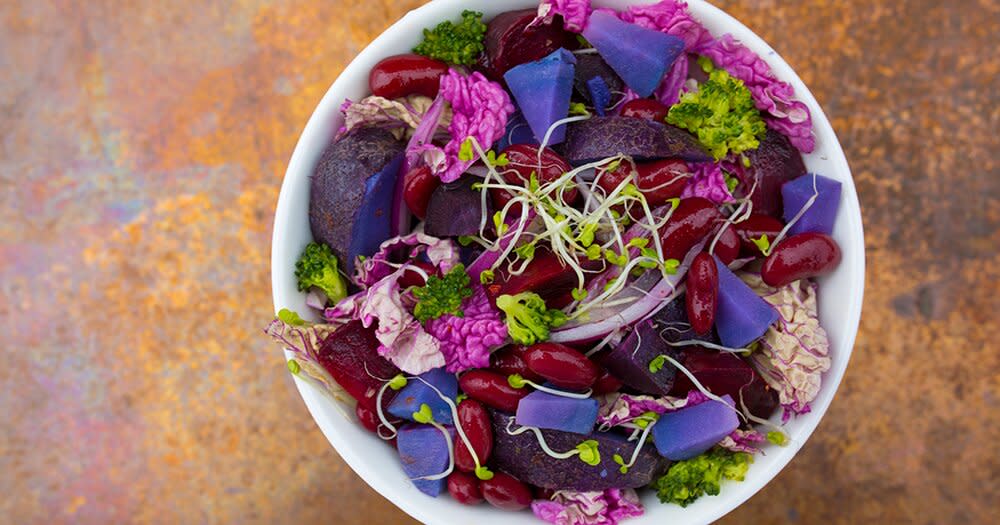You Need Way More Nutrients for Good Gut Health

Photo: iMarzi/Shutterstock
Attention creatures of culinary habit: It's time to branch out. Seventy-five percent of the world's population consumes only five animal species and 12 plant species, and this loss of dietary diversity over the past 50 years or so may be a contributing factor to an influx of diseases, according to a lecture given at IFT15: Where Science Feeds Innovation in Chicago. It could have contributed to a rise in obesity, type 2 diabetes, and gastrointestinal issues, suggested lecturer Mark Heiman, vice president and chief scientific officer at MicroBiome Therapeutics. (Find out Why the Most Nutritious Foods Aren't As Healthy As They Used to Be.)
Diet is the main regulator of what healthy bacteria make up your microbiome-the ecosystem of the human GI tract, explained Heiman. Climate change and current farming practices have lead to less nutritionally diverse produce, plus most people only eat a limited diet. In fact, rice, maize, and wheat alone make up 60 percent of the calories people consume around the world, Heiman said. (Here are 8 tips for absorbing more nutrients from your food.)
"Like any ecosystem, the one that is most diverse in species is the one that is going to be the healthiest," Heiman said. "In almost every disease state that has been studied so far, the microbiome has lost diversity."
Heiman's research has found that people with pre-diabetes and type 2 diabetes had a different mix of gut bacteria than other people. When these 30 participants were given a cocktail of missing nutrients-including beta glucan and antioxidants-their microbiome shifted to a healthier bacteria makeup and they saw benefits including feeling more satisfied from their meals, improved glucose control, and relief from constipation.
Heiman also did a similar study on obese mice: He gave them nutrients from heirloom soybeans-early versions of the now-common produce that were popular before modern farming and therefore more nutritionally rich. These nutrient-rich supplements not only improved the obese mice's gut bacteria but also decreased their weight gain and colon inflammation.
While you probably can't find more nutritionally-rich versions of the produce you're already eating at your grocery store, you can help improve your microbiome (and, therefore, disease risk) another way: Think about your diet right now and how you could add more diversity to your plate, Heiman suggested. The more colorful your plate, the more diverse your nutrient intake, and the happier your microbiome will be.
In addition to eating the rainbow, making a point to consume probiotics can also lead to a healthier microbiome. Refresher: Probiotics are the good, beneficial microorganisms found in your gut. Research has suggested that consuming probiotics can help lower cholesterol, reduce BMI, and lower blood sugar levels in diabetic patients. They're found in fermented foods such as kefir and kimchi, but don't overlook probiotic supplements, which offer a potent level of healthy bacteria and an abundant variety of cultures. Try Renew Life's Ultimate Flora Extra Care Probiotic 30 Billion, which has 10 different probiotic strains in every pill.
The fact that a collective lack of nutrients may have contributed to a rise in disease is just one more addition to a long list of reasons you should pay attention to your nutrient intake and microbiome. Start with these colorful recipes that will boost your diet and your Instagram.

